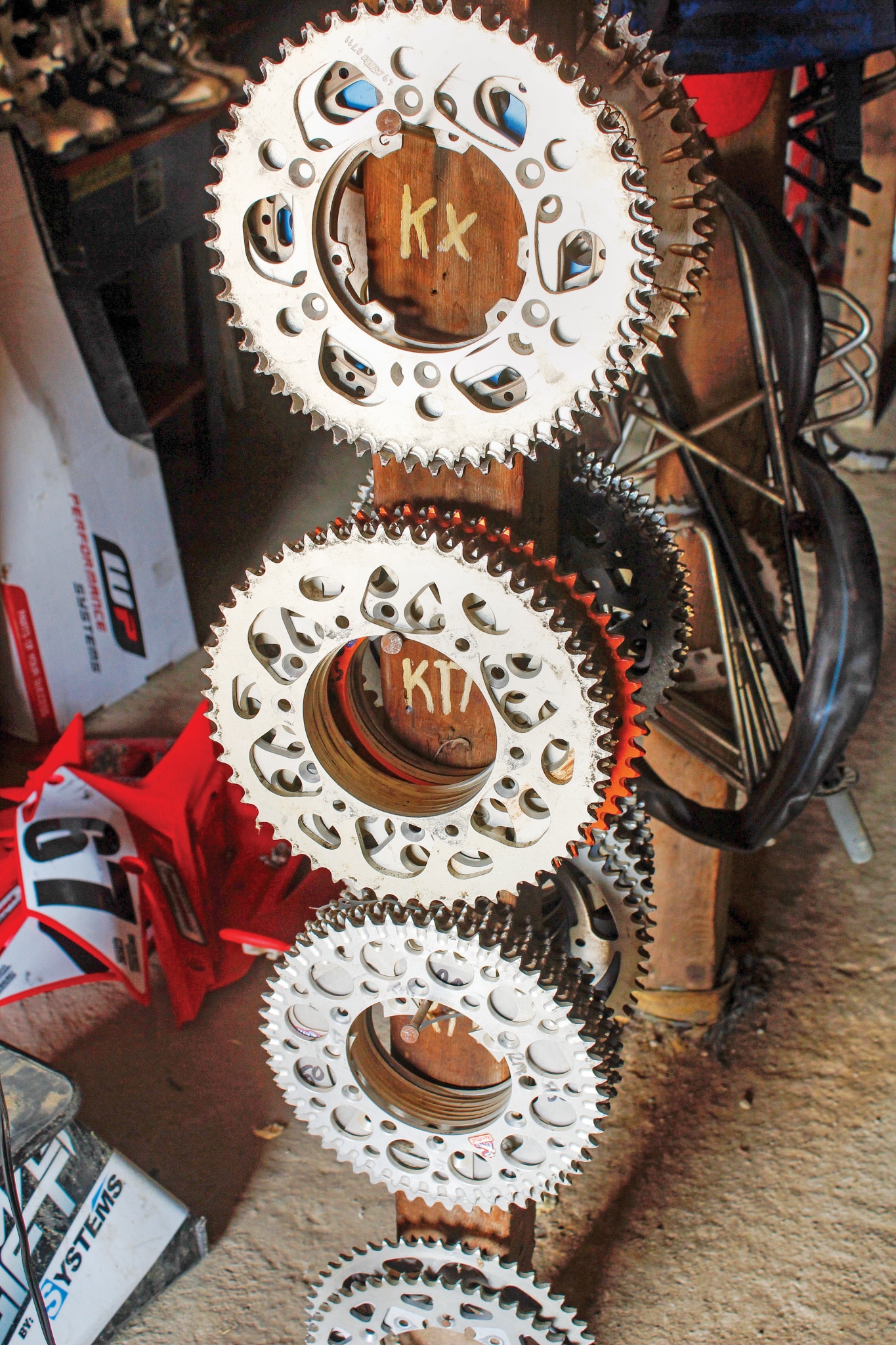MXA TECH SPEC: WHY GOING UP ON THE REAR SPROCKETS IS ACTUALLY GOING DOWN
Gearing terminology can be a bit confusing. Going to a smaller rear sprocket or larger countershaft sprocket is referred to as “gearing it up” or “going taller.” Taller gearing means bigger gaps between gears, less hit and faster top speeds. It creates a broader, mellower feeling powerband that’s easier to ride and requires less shifting. Conversely, a bigger rear sprocket or smaller countershaft sprocket is known as “gearing it down” or “going lower.” More teeth in the rear and fewer teeth on the countershaft translates into a quicker-revving, narrower-feeling, harder-hitting powerband that requires more shifting but less clutch use.
If you have experience with a bicycle derailleur, the concept of gearing should be intuitive. You shift to a bigger gear on the rear to get more torque for steeper inclines, and you shift to a smaller gear on the rear for higher speeds on the flats. The opposite is true for the front sprockets at the cranks. And just as with a bicycle, changing gears on the front sprocket makes a bigger difference than changing gears on the rear. All these things are true for a motorcycle, too. So, when you get confused, think about your mountain bike.
On a bicycle, when you’re in a low gear going downhill, your legs immediately spin out and can’t keep up. When your motorcycle gearing is too low, the engine does the same thing. It quickly revs through its useful part of the powerband, and you have to upshift immediately. If you’ve installed a big-bore kit or significantly increased your bike’s power, the gearing you had on it before you modified it might now be too low.
When you’re in too tall a gear on the bicycle, it’s difficult to pedal and it takes a long time to get on top of the gear. You need to be in the right gear to maximize the potential of your legs, and the same is true with a motorcycle. If you’re in deep loam, sand or going up a hill, your engine will lug to pull a tall gear, and you will have to downshift.
AS A RULE OF THUMB, ONE TOOTH ON THE FRONT COUNTERSHAFT SPROCKET EQUALS APPROXIMATELY THREE ON THE REAR. TO MAKE A PRECISE COMPARISON, YOU TRANSLATE THE GEARING INTO A RATIOS BY DIVIDING THE NUMBER OF TEETH ON THE REAR BY THE NUMBER OF TEETH ON THE FRONT. A SMALLER RATIO NUMBER IS TALLER GEARING.
Rule of thumb. One tooth on the front countershaft sprocket equals approximately three on the rear. To make a precise comparison, you translate the gearing into A ratios by dividing the number of teeth on the rear by the number of teeth on the front. A smaller ratio number is taller gearing. For example, a 14/51 gear ratio is 3.64, but a 13/48 ratio is a 3.69. The gear ratio is how many times that front sprocket has to rotate to turn the rear wheel one revolution.
Primary or final? The primary drive (internal) gear ratios of a bike can be adjusted by the manufacturer during the design stages of the bike or by top-tier race teams with the judicious application of money. Changing the primary drive ratios isn’t feasible for regular guys, but the opposite is true for the final drive. The final drive is composed of the countershaft and rear sprockets. It is the cheapest way to make a significant change to a bike’s power delivery.
Room? Before you put on a larger rear sprocket, you must pay close attention to how much chain adjustment you have available in the rear axle. A bigger rear sprocket might require shortening the chain.
Dangers. Never mate a used chain with a new sprocket or vice versa. The pitch between the teeth of the sprocket and links of the chain are spaced the same, but a used chain or a worn sprocket has a different pitch and will quickly self-destruct its opposite side. Another concern is making sure the sprocket bolts are tight. Loose sprocket bolts ovalize the holes in the hub—and after that happens, the sprocket bolts will come loose constantly, or worse, throw the chain and the rider.
Track conditions. Riders can change the gearing to manage different track conditions. For example, deep sand or well-disced dirt can bog the engine down. Adding a tooth to the rear will help the engine get on top of the gear. Conversely, if you are worried about wheelspin on hardpack, you might want to try taller gearing, because hard-pack dirt doesn’t have the traction of loam and might need less hit from the powerband.
Enduro models have wide-ratio gearboxes, meaning there is a larger gap from one gear to the next. They compensate for this by having six-speed gearboxes instead of five. As a rule, first gear on an enduro bike is very low and sixth gear is very high, with equally spaced gaps between the gears. Many manufacturers and race teams use rpm drop when shifting to determine the gap between each gear. This means that they might want to only lose 2000 rpm per shift as opposed to 2400 rpm. On motocross models, each internal gear ratio is 17 to 18 percent larger than the one before it. For many cross-country models, the gap is 20 to 21 percent.







Comments are closed.